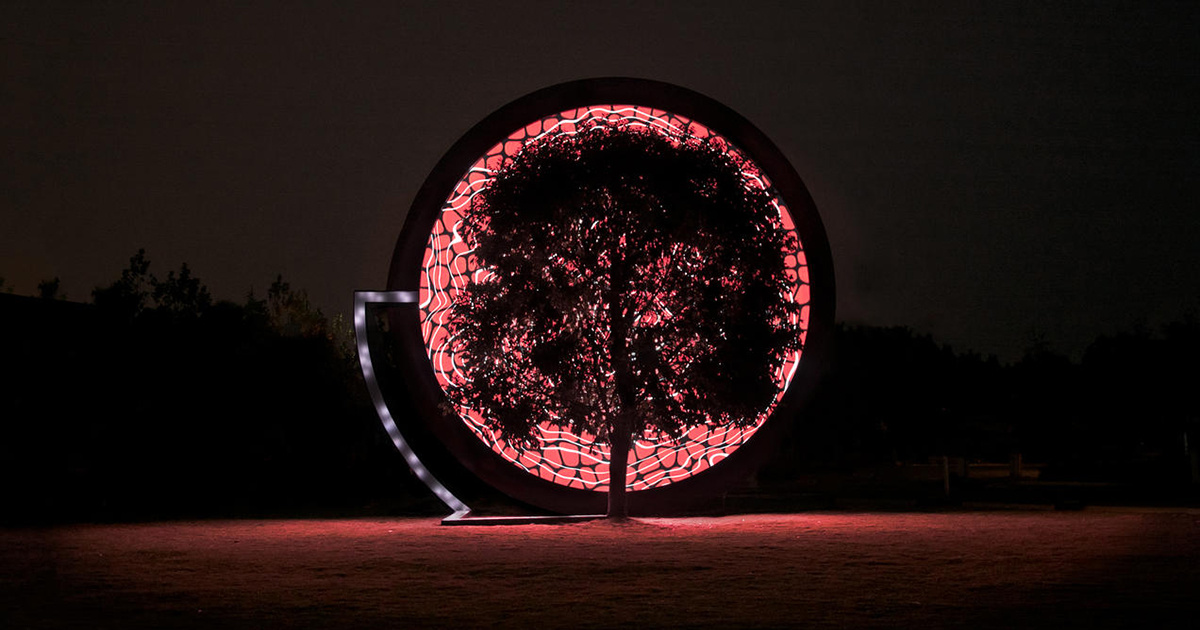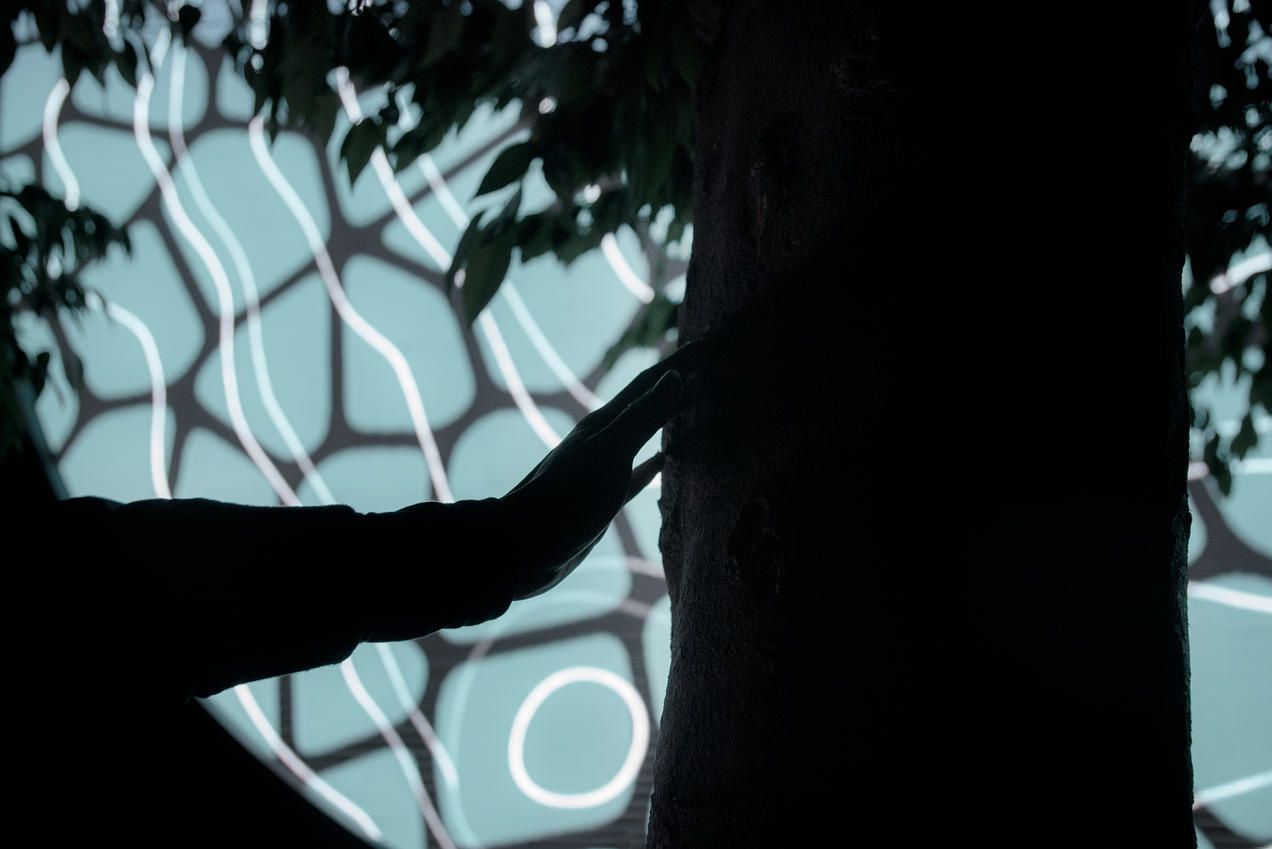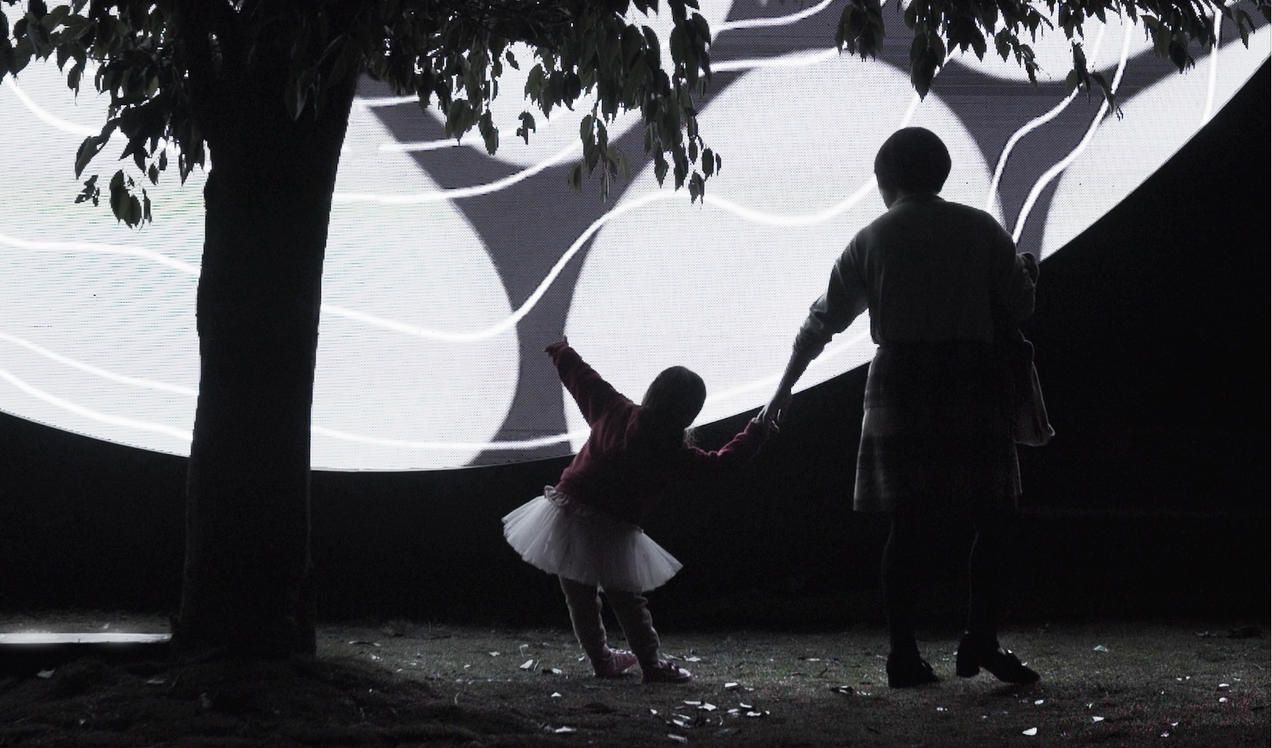

By Clara Chaisson
Dutch interactive artist Thijs Biersteker is something like a real-life Lorax—except instead of speaking for the trees, he equips them with the technology to speak for themselves.
Trees are among our most diligent and prolific data loggers (no pun intended), recording a wealth of information about the world around them in the growth rings they produce each year. Collectively these rings tell a detailed story about the events the tree has experienced over its lifetime—stories of drought, wildfire, heavy precipitation, pollution, extreme temperatures and more. Archaeologists use tree ring data to date artifacts; paleoclimatologists use the information encoded in these thin lines of wood to model past climates and inform our understanding of future climate change.
Long-term records, steadily accumulated over the centuries in tree rings (or ice cores or sediment), are crucial to science. But they take time—and as someone trying to cultivate a widespread sense of urgency about climate change, Biersteker can’t afford to wait. His newest installation, Voice of Nature, uses environmental sensors and 1,600 data points to create a vivid visualization of the conditions a tree is experiencing, in real time.
Thijs Biersteke
Voice of Nature is Biersteker’s effort to “speed up the process to a human pace,” making our species’ profound influence on the environment immediate and easier to grasp. Watching something as steadfast as a tree react in the moment, observers can tune in to the invisible forces that surround us at all times.
After taking inspiration from the seasonal changes of a tree outside his window in Amsterdam, Biersteker worked with the Netherlands’ Delft University of Technology to develop the project for Light Up Bashu, a monthlong art festival in Chengdu, China, last fall.
Thijs Biersteke
His team rigged a Japanese cinnamon tree, which is protected in China, with sensors that measure conditions such as moisture levels, air quality, carbon dioxide, and soil temperature. When fed into an algorithm, these data calculate the tree’s growth rate moment by moment and project it, in the form of expanding rings, onto a giant, auralike circular screen behind the tree. A slower growth rate corresponds with tightly spaced rings, while a faster growth rate sends out a steady pulse of visually distinct rings. Disruptions like PM 2.5 air pollution create uneven, textured lines—ironically, the worse the growth conditions are, the more complex and beautiful the design becomes.
Biersteker’s technique has proved effective on audiences of all ages. “My mother says the tree gets angry if a lot of cars are smoking,” one young viewer told the artist.
Thijs Biersteke
“Phrases like climate change or anthropocene feel so out of reach. What I try to do is make it tangible at that moment,” said Biersteker. “In the longer spectrum, a lot of people don’t connect to the issues because they become too big. I want to make them small again, so you have the idea that you can act. It’s happening at your time, not the next generation.”
In the words of the Lorax:
Unless someone like you cares a whole awful lot,
Nothing is going to get better.
It’s not.
Voice of Nature . βº1-version
youtu.be
Reposted with permission from our media associate onEarth.

 233k
233k  41k
41k  Subscribe
Subscribe 


